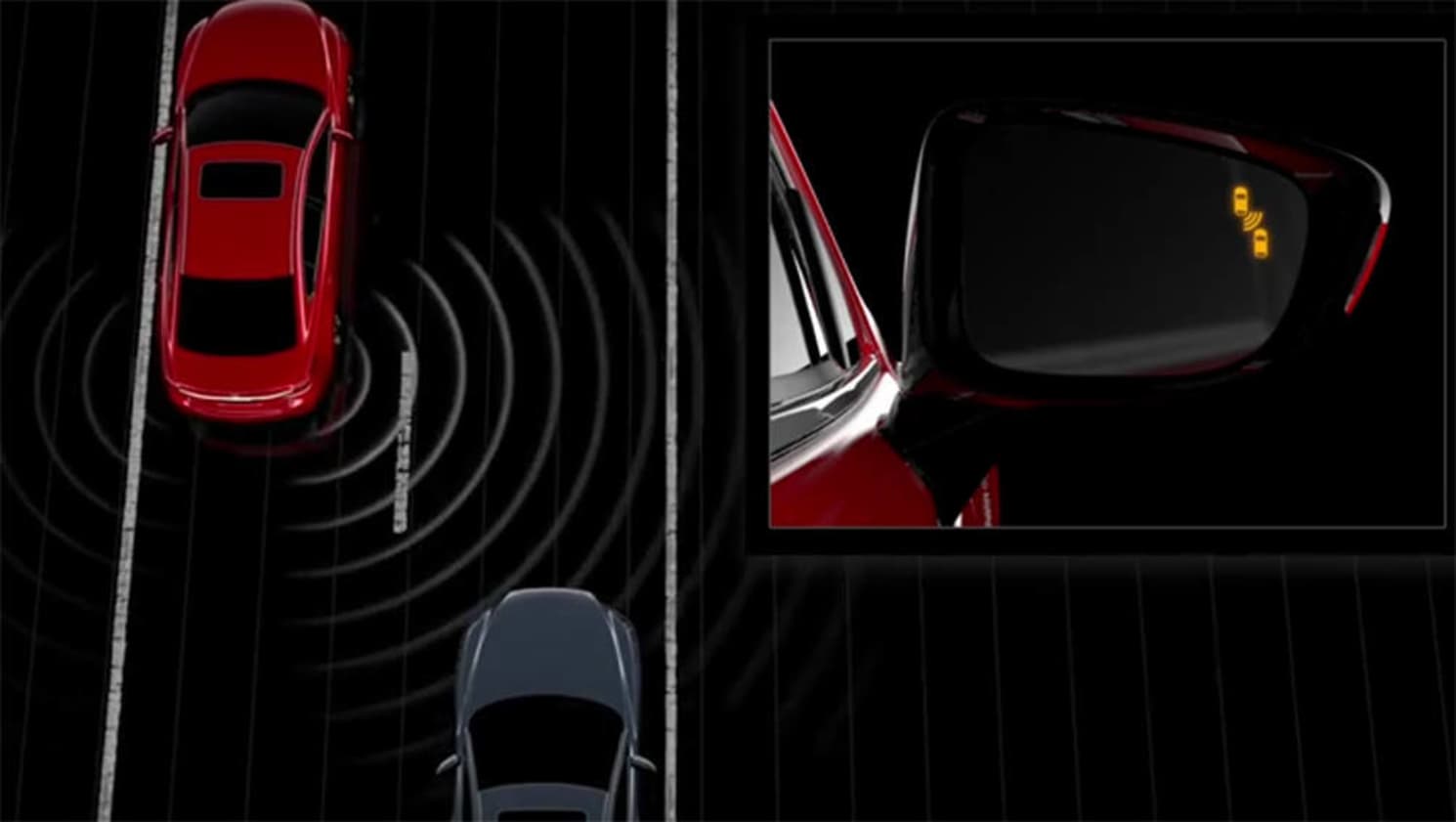Theoretically, any properly trained and fully awake driver has no need for blind-spot monitoring, because they turn their heads and look at the lane beside them when changing lanes, but fortunately car companies know that not all drivers are properly trained. Or fully awake.
You really need to be, or at least know, a motorcyclist to grasp the irony of Volvo inventing the Blind Spot Information System (BLIS), back in 2003.
The relationship between Volvo drivers and motorbike lovers is every bit as tense and twisted as those between Kevin and Julia, or Tony and Malcolm.
Some motorcyclists even used to ride around with helmet stickers announcing them as a “Volvo Aware Rider”, a cruel parody of the “Motorcycle Aware Driver” bumper stickers.
In short, people on bikes long believed that Volvo pilots were out to kill them, either through lax neglect or pure spite.
While the technology itself is widely available, the sad news is that it’s generally not a standard fitment.
Motorcyclists, of course are most at risk of being knocked down by people who don’t check their blind spots, because it is far easier for them to disappear in that accursed space over your left and right shoulders while driving.
The joke among riders being the only thing that would turn a Volvo driver’s head was the sight of another Volvo going past.
You can’t fault the Swedes when it comes to safety, though, and they invented the ingenious BLIS system, which has undoubtedly saved the lives of many riders, not to mention preventing countless thousands of car-to car collisions caused by drivers with lazy or inattentive necks.
The first system used cameras to detect vehicles in your blind spot and then flashed a warning light in your mirror to tell you they were there, and not to change lanes.
How does it work?
Volvo’s system initially used digital cameras mounted beneath the wing mirror which continuously monitored a car’s blind spots, taking 25 pictures a second and and then calculating the changes between frames.
Because there are some situations - fog or snow - in which the cameras don’t work too well, many companies have now moved to, or added, radar systems instead.
Ford, for example, which also uses the BLIS acronym, uses two multiple-beam radars in the rear quarter panels on your car to detect any vehicle entering your blind spot zones.
Some cars also add annoying little warning chimes, to go with the flashing lights in the wing mirror.
Not to be confused with...
Blind-spot-monitoring systems should not be confused with lane-departure warning or lane-assist systems, which generally use cameras to monitor road markings, and not other vehicles (although some systems do both).
The goal of a lane-departure monitor is to notice if you are wandering out of your lane without indicating. If you do, they will flash lights at you, set off buzzers, vibrate the steering wheel or even, in the case of some expensive European brands, use autonomous steering to gently guide you back to where you should be.
Which companies offer blind-spot monitoring?
While the technology itself is widely available, the sad news is that it’s generally not a standard fitment to entry-level - or cheap - cars.
Those in the industry are quick to point out that it’s a costly venture putting that kind of tech into the wing mirrors, and that because those mirrors are the sort of thing that go missing from your vehicle occasionally, that can also make them more expensive to replace, and those at the bargain end of the market might not want the grief.
Really, though, blind-spot monitoring is the kind of feature that should be standard - as it is on all Mercedes-Benz models, for example - because it can, and does, save lives.
Surprisingly, the other two Germans aren’t quite as generous. Lane-change warning, as they call it, is standard on all BMWs from 3 Series up, which means anything smaller misses out, and sub-brand Mini doesn’t offer the tech at all.
Audi makes it a standard offering from A4 up, but A3 buyers and down have to shell out extra.
Volkswagen doesn’t give you the option on the Polo, because it’s an old-generation car that wasn’t designed with it, but most other models will come with the system on mid or high-grade models.
Generally, that’s the case; if you want it, you’re going to have to pay for it. Hyundai offers blind-spot tech standard on its limo Genesis, but on all other cars you have to step up to a mid or high-spec grade to have it included.
It’s the same story at Holden and Toyota (although it’s standard on nearly every Lexus except the RC).
Mazda offers its version as standard on the 6, CX-5, CX-9 and MX-5, but you need to up spec on CX-3 and 3. It’s not available on the 2 at all.
At Ford, you can have BLIS as part of a Safety Pack for $1300, where it’s bundled in with other handy features like Auto Emergency Braking, and around 40 per cent of Kuga buyers, for example, take the option.











